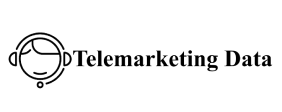Choosing between a cloud PBX and a traditional, so-called “on-premises” PBX is a significant step in designing business communications. In this section, we examine the advantages and disadvantages of both approaches and highlight the migration from one solution to the other.
Comparison of the advantages and disadvantages:
Cloud telephone system:
Advantages:
- Cost savings: A cloud phone system eliminates the need for expensive hardware and maintenance costs, resulting in significant cost savings.
- Scalability: The cloud facility can easily be adapted to the needs of a company, be it adding new users or expanding into new markets.
- Flexibility: Employees can work from anywhere, increasing efficiency and promoting work-life balance.
- Location independence: International overseas chinese in uk data business relationships are simplified because expensive international calls can be avoided.
Disadvantages:
- Dependence on the Internet: A reliable Internet connection is required to maintain communication.
- Privacy concerns: Storing communication data in the cloud requires strict security measures to ensure data privacy.
Traditional telephone system (on-premises):
Advantages:
- Full control: Companies have full control over their telephone system and communications infrastructure.
- Data security: Because data is stored locally, companies have better control over security.
Disadvantages:
- High initial investment: Purchasing and Buy Turkey WhatsApp Number Database maintaining hardware requires significant initial investment.
- Limited scalability: Expanding the system is often costly and time-consuming.
- Limited flexibility: Employees are tied to the office location and cannot work flexibly.
Migration from on-premises to cloud:
Migrating from a traditional telephone system to a cloud telephone system requires careful planning and preparation. First, the company’s individual requirements should be analyzed. This includes evaluating the existing hardware and defining bulgaria business directory the desired functions. After selecting a suitable cloud provider, the migration takes place step by step, in which existing data and settings are transferred to the cloud.
Migration provides an opportunity to leverage the benefits of cloud PBX, including cost savings, scalability and flexibility. Careful training of employees is essential to ensure they can use the new tools effectively.
Challenges and solutions related to cloud telephone systems
When moving to a cloud PBX, there are several challenges that require careful attention. In this section, we will look at the challenges of network security, call quality control, and data backup and recovery, and discuss possible solutions.
Network security:
One of the main concerns when using a cloud PBX is network security. Since communications are handled over the Internet, it is important to ensure that data is protected from threats. Here are some possible solutions:
- Encryption: Encryption of communications data is a fundamental security principle. Ensure that all transmitted data is adequately encrypted to prevent unauthorized access.
- Access control: Implement strict access controls to ensure that only authorized users can access the cloud PBX. This can be achieved through passwords , multi-factor authentication and permission management.
- Security updates: Keep systems and software up to date by regularly installing security updates to close potential vulnerabilities.
Quality control of calls:
Call quality is a crucial aspect of business communication. It is important to ensure that calls are clear and reliable. Here are some solutions:
- Bandwidth management: Make sure that sufficient bandwidth is available for communication. Insufficient bandwidth can lead to quality problems.
- Real-time monitoring: Implement real-time monitoring tools to monitor call quality. This allows problems to be identified and resolved early.
- QoS (Quality of Service): Prioritize VoIP traffic and give it higher priority on the network to ensure high call quality.
Data backup and recovery:
Backing up and restoring communications data is critical to keeping your business running. Here are some solutions:
- Automatic data backup: Implement automatic data backup solutions to ensure that all communication data is backed up regularly.
- Disaster recovery plan: Develop a disaster recovery plan that specifies what to do in the event of a failure or data loss.
- Cloud data storage: Take advantage of the cloud to securely store and restore communications data.
The challenges of implementing a cloud telephone system are manageable as long as appropriate security and quality control measures are taken.
Compliance and legal aspects related to cloud telephone systems
Compliance and legal aspects are of great importance when implementing and using cloud telephone systems. In this section, we will particularly look at data protection and the GDPR (General Data Protection Regulation) as well as the legal requirements related to emergency call services.
Data protection and GDPR:
Data protection is a top priority in today’s digital business world. When using cloud telephone systems, personal data such as telephone numbers and call logs are affected. Here are some important aspects related to data protection and GDPR:
- Data protection policies: Companies that use cloud PBXs must develop and implement clear data protection policies. These policies should specify how personal data is collected, stored and processed to ensure compliance with the GDPR.
- User consent: User consent to the processing of their data is an essential protection mechanism. Companies should ensure that users give their consent to the processing of their data and document this consent.
- Right to be forgotten: Under the GDPR, users have the right to request the erasure of their personal data. Companies must ensure they are able to comply with this request.
- Security measures: The GDPR requires appropriate security measures to protect personal data from loss or unauthorized access. This includes encryption and access controls.
Emergency services and legal requirements:
In many countries, emergency services such as 112 (Europe) or 911 (USA) are required by law to ensure rapid assistance in an emergency. Cloud telephone systems must meet these requirements. Here are some legal aspects:
- Support emergency services: Cloud PBXs must provide the ability to support emergency services. This includes providing caller location information and complying with legal requirements for emergency services.
- Emergency number provision: The cloud telephone system should enable the use of emergency numbers such as 112 and 911 and ensure that calls are forwarded to the appropriate authorities.
- Meet legal requirements: Companies must ensure that their cloud telephone systems meet all legal requirements related to emergency call services in order to avoid legal consequences.
Compliance with these legal aspects is crucial to ensure both data protection and user security. Companies using cloud phone systems should be aware of these requirements and take appropriate measures to ensure they comply with legal regulations. In the following section, we will look at the cost structures and budgeting of cloud phone systems.
Cost structures and budgeting in relation to cloud telephone systems
Cost structures and budgeting are crucial aspects when implementing and using cloud telephone systems. In this section, we will take a closer look at the importance of cost transparency and the possibilities for budget optimization in this context.
Transparency of costs:
Cost transparency is very important for companies to maintain financial control and avoid unexpected expenses. With cloud telephone systems, the costs often depend on various factors. Here are some points to ensure cost transparency:
- Clear pricing models: Businesses should ensure they have a clear understanding of cloud phone providers’ pricing models. This includes monthly subscriptions, per-user fees, and additional costs for certain features.
- Monitoring and reporting: Implement cost monitoring and reporting tools to keep track of consumption and spending and make adjustments if necessary.

